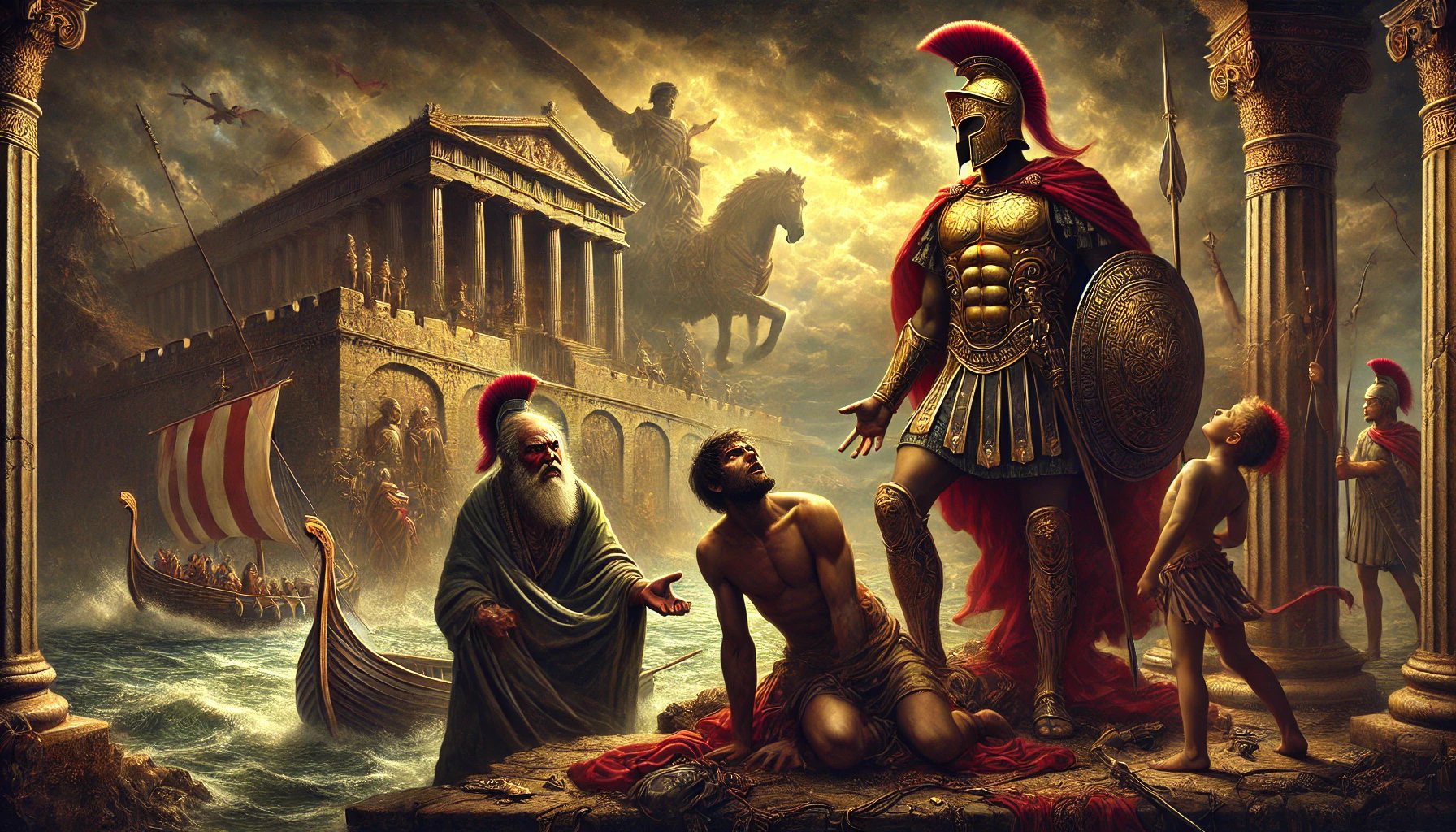Louise de la Vallière, published in 1849, is the third volume in Alexandre Dumas’ d’Artagnan Romances, following The Three Musketeers and Twenty Years After. The novel follows The Vicomte de Bragelonne and explores the political and romantic intrigues of the French court under Louis XIV. This story, set in the 1660s, centers on the complex relationships among King Louis XIV, his courtiers, and his lovers, particularly Louise de la Vallière, the book’s titular character. As the king’s interest in Louise grows, so does the dramatic tension between duty, love, and loyalty among the novel’s central characters.
Plot Summary
In the grandeur of Louis XIV’s France, amidst the intrigues and whispers of courtly affairs, young Louise de la Vallière, a gentle and devout lady-in-waiting to Queen Marie-Thérèse, unknowingly becomes the focus of the king’s desire. The court, with its dazzling splendor, conceals a web of passion and ambition, where loyalty is sacrificed for the sake of power and love. This delicate world trembles when the youthful king, eager to assert his dominance not only over his realm but also in his personal life, sets his sights on Louise. She, however, holds no ambition beyond her quiet life and bears a secret affection for Raoul, the noble Vicomte de Bragelonne.
Raoul, the son of the esteemed Athos, returns to court, unaware that his love for Louise is threatened. He is a young man of unshakable honor and deep affection, whose heart has been claimed by Louise since their youth. With his father’s blessings, Raoul dreams of marriage, a life of happiness with his beloved Louise. Yet, as he reenters the royal court, the tides of fate begin to turn against him, and the innocence of his love is overshadowed by the relentless ambitions of those around him.
King Louis, intent on possessing Louise without inciting scandal, devises a plan. His own sister-in-law, the lively and flirtatious Madame Henrietta, who harbors her own share of secrets and unfulfilled affections, serves as a distraction, a veil to conceal his true desires. As Henrietta’s charms keep other suitors distracted, Louis uses her as a screen to pursue Louise, hoping to keep his advances secret. Madame Henrietta, aware of her role, delights in the attention and enjoys playing a part in the king’s game, though she herself bears an unspoken affection for Raoul’s friend, the Comte de Guiche.
The royal court moves to the tranquil gardens of Fontainebleau, where nature itself seems to echo the passions and secrets blossoming within. There, the King chances upon Louise and overhears her confession of love for him, uttered softly in conversation with her close friends. Her words, filled with a hesitance that matches her pure heart, ignite a fervor in the king. Emboldened, Louis presses his suit, ensnaring Louise in a romance that she cannot resist, despite the lingering pangs of guilt that haunt her. Alone together during a sudden rainstorm, their closeness intensifies, and rumors begin to ripple through the court, though few are privy to the affair’s true depths.
Raoul, still ignorant of his beloved’s change of heart, is sent away on an errand to England by the king, who wishes to remove any obstacles to his relationship with Louise. Torn between duty and the pangs of suspicion, Raoul departs, trusting in Louise’s loyalty. Meanwhile, Athos, the steadfast father who values honor above all, becomes troubled by the shifts he perceives at court, aware that his son’s happiness and future may be in peril.
While love and jealousy brew within the royal chambers, another conflict unfolds—a battle for influence between Fouquet, the king’s superintendent of finances, and Colbert, the king’s advisor and rival. Fouquet’s lavish generosity and loyalty contrast sharply with Colbert’s ruthless ambition. The latter has long plotted to bring down Fouquet, aiming to secure his place as the king’s favored advisor. Colbert manipulates Louis, urging him to distrust Fouquet, even as Fouquet’s friends—like Aramis, the former musketeer now Bishop of Vannes—seek to protect him.
Aramis, whose motives are as enigmatic as his past, is drawn into these treacherous waters. He, too, has been playing a game of influence, enlisting his old friend Porthos, the good-natured yet formidable giant, in secretive tasks that stir suspicions within the royal court. As plots and counterplots swirl, the fate of many hangs in the balance, and loyalty is tested to its limits.
Back at Fontainebleau, Louise’s distress grows, and her guilt deepens, especially as Raoul’s absence lingers. She, who never sought the attentions of royalty, finds herself caught between her own love and the unyielding desire of the king. Athos, observing the painful changes in the young woman who once seemed destined to bring his son happiness, grows wary. He confronts the king, demanding justice for Raoul, but Louis, resolute and unyielding, refuses to relinquish Louise. The once harmonious relationship between the king and Athos fractures under the weight of the king’s passion and Athos’s sense of betrayal.
Raoul’s return to France brings with it a dawning realization of the changes that have occurred. Confronted by rumors and painful truths, he approaches Louise, hoping to reclaim the love they once shared. But Louise, bound by her complex feelings for the king and her own sense of guilt, is unable to reciprocate Raoul’s affection. His heart breaks as he realizes the full extent of her betrayal, and he turns to his father, seeking solace and guidance in the wake of his shattered dreams.
Athos, devastated by the sorrow inflicted upon his son, withdraws with Raoul, each carrying their own wounds inflicted by a court where power supersedes all, even love. Louise, left to contend with the consequences of her choices, suffers her own punishment, trapped within the very palace that once seemed so alluring. The weight of her sorrow reflects the heavy toll of ambition and desire within the walls of Versailles.
As the drama of love plays out, Fouquet’s fortunes shift dramatically. He is ultimately accused of embezzling funds, and his grand estate of Vaux-le-Vicomte becomes a symbol of both his ambition and his downfall. Colbert’s machinations succeed, and Fouquet, once the king’s confidante, is led to imprisonment, marking the tragic conclusion to his career. Meanwhile, Aramis and Porthos, drawn deeper into their own schemes, find themselves at odds with the court’s dangerous web. Even D’Artagnan, the once young and bold musketeer, feels the shift in the world he knew, as friends drift and loyalties wane.
In the end, each character is left to reckon with the choices they have made, whether for love, power, or honor. The court of Louis XIV has claimed both the innocent and the ambitious, leaving behind scars on the hearts of those who dared to love, hope, and trust in a world ruled by desire and deceit. And as they navigate the darkness of their own fates, the grandeur of Versailles stands as both a witness and a silent judge to the ruin and romance it has harbored within.
Main Characters
D’Artagnan – Now a veteran Musketeer, D’Artagnan is a man of intelligence and loyalty whose loyalty to his friends and devotion to his duty remain steadfast. Though his role in court intrigues is somewhat less central, he provides a steady moral compass and a reminder of the chivalric values that defined his younger years.
Louis XIV – The young and ambitious king of France, Louis XIV is a complex character who seeks both power and pleasure. He becomes infatuated with Louise de la Vallière, sparking jealousy, court intrigue, and moral conflict as he navigates his desires and his responsibilities as ruler.
Louise de la Vallière – Gentle, devout, and unassuming, Louise is one of Queen Marie-Thérèse’s maids of honor and becomes the king’s lover, although she struggles with the moral implications of her relationship. Her sincere affection and inner conflict make her a sympathetic figure, even as she finds herself ensnared in the schemes of the court.
Raoul, Vicomte de Bragelonne – The noble and loyal son of Athos, Raoul is deeply in love with Louise and devastated by her involvement with the king. His storyline highlights themes of honor and heartbreak as he grapples with betrayal and loss.
Athos – Formerly one of the Three Musketeers, Athos is now a distinguished nobleman. His wisdom and strength of character make him a supportive father to Raoul and a voice of counsel. He is saddened by the moral decay he sees in the court and disapproves of the king’s romantic entanglements.
Aramis – Once a Musketeer and now a bishop with his own hidden ambitions, Aramis is calculating and resourceful. He uses his position to influence and manipulate court events to his advantage, working behind the scenes to further his own mysterious goals.
Monsieur Fouquet – The king’s superintendent of finances, Fouquet is ambitious yet generous, embodying both the grandeur and corruption of the time. His rivalry with the conniving Colbert and loyalty to his allies put him in a precarious position at court.
Theme
Love and Honor – Central to the novel is the tension between romantic desire and personal honor. Louise’s relationship with the king conflicts with her sense of duty and morality, while Raoul’s heartbreak underscores the cost of loyalty and love in a world driven by power.
Court Intrigue and Power – The machinations of Louis XIV’s court reveal the ruthless struggle for influence. Characters like Fouquet and Colbert represent conflicting ambitions, with each character’s success tied to their ability to manipulate and outmaneuver rivals, reflecting the era’s complex social and political dynamics.
Betrayal and Loyalty – The betrayals in love and friendship that arise throughout the novel serve as reminders of the impermanence and vulnerability of human bonds within a political court. Raoul’s tragic loss of Louise to the king symbolizes the betrayal of pure love for power, while D’Artagnan and Athos represent steadfast loyalty in an increasingly corrupted world.
Moral Conflict – Many characters grapple with moral dilemmas, from Louise’s guilt about her affair with the king to Athos’s disapproval of the court’s decadence. The novel highlights the sacrifices characters make between personal virtue and the allure of status or love, illustrating the personal costs of compromise.
Writing Style and Tone
Dumas’ writing in Louise de la Vallière retains his characteristic elegance and fluidity, blending historical detail with vivid dialogue and dramatic, romanticized character portrayals. His style is particularly attuned to the nuances of court life, capturing the opulence and intrigue of Louis XIV’s reign. Through carefully crafted descriptions, he contrasts the glittering façades of the French court with the characters’ internal struggles, skillfully revealing the emotional undertones beneath outward appearances.
The tone in Louise de la Vallière balances between the nostalgic heroism found in The Three Musketeers and a more somber, reflective quality that underscores the moral ambiguities of the characters’ lives. While adventure remains a key element, the book’s tone is introspective, probing the inner lives of its characters and the ethical dilemmas they face. Dumas masterfully uses tone to echo the themes of disillusionment and the bittersweet realities of love and loyalty, imbuing the narrative with an emotional weight that lingers beyond the page.
We hope this summary has sparked your interest and would appreciate you following Celsius 233 on social media:
There’s a treasure trove of other fascinating book summaries waiting for you. Check out our collection of stories that inspire, thrill, and provoke thought, just like this one by checking out the Book Shelf or the Library
Remember, while our summaries capture the essence, they can never replace the full experience of reading the book. If this summary intrigued you, consider diving into the complete story – buy the book and immerse yourself in the author’s original work.
If you want to request a book summary, click here.
When Saurabh is not working/watching football/reading books/traveling, you can reach him via Twitter/X, LinkedIn, or Threads
Restart reading!








